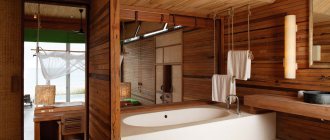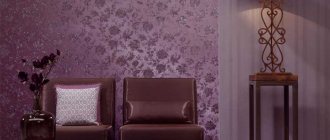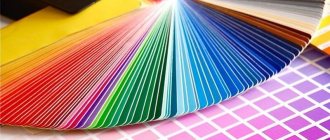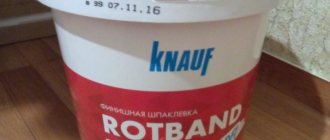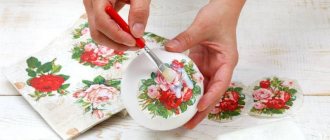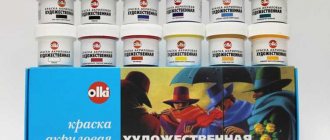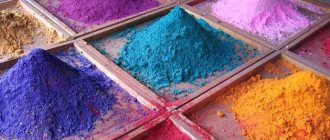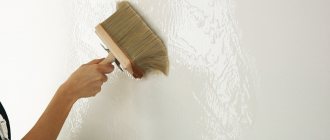What is liquid glass
Liquid glass is called sodium or potassium silicate. Outwardly it looks like a translucent thick liquid. The degree of “thickness” depends on the concentration. Diluted with water. In general, this is silicate office glue. According to any GOSTs and technical specifications, this is exactly how it passes. In Soviet times, it was quite actively used in construction. In particular, it was added to concrete to reduce water absorption.
It must be said that today there are much more effective special additives for concrete that were developed specifically for these purposes. They are extremely easy to use - you just need to add them to the batch according to the norm. You have to be careful with liquid glass. If used incorrectly, the strength of concrete is greatly reduced. One of the annotations for this additive states that it is added to concrete when high “starting” strength is required, but long-term strength (after 28 days) is unimportant. That is, it is advisable to use concrete with liquid glass as a repair agent - to eliminate the leak. This is how it is used in the navy to repair holes so that they can reach the shore.
So why is liquid glass added to concrete, and not special means? Because it costs much less. But savings often backfire. If all conditions are not met, the concrete simply crumbles. So it is better not to use liquid glass as an additive to the solution.
Is it worth adding liquid glass to concrete?
Liquid glass packages indicate the amount of substance that must be added to concrete to improve waterproofing properties. But the disadvantages of such an additive are not described there. And the rules for working with the resulting solution are also not written down, because it is very difficult to work with. And that's why:
- It is necessary to control the silicate module. This is the ratio of the amount of concrete and silicate. If the proportions are violated, the concrete crumbles after hardening. This module can be effectively controlled in laboratory conditions. Not at home.
- After introducing liquid glass into concrete, the survivability of the solution (laying time) is reduced to several minutes. Sometimes up to one minute. If you don’t have time, the concrete will crumble.
If all these nuances are observed, one can hope that the concrete will not only be hydrophobic, but also durable. As you can see, there are enough difficulties. And if you count the additional costs (CPB + cement for ironing), it is unlikely to come out cheaper than expensive industrial additives. So the use of liquid glass in concrete is hardly justified.
Wall decoration with glass panels
Glass panels can easily replace tiles in the bathroom
In addition to glass wallpaper, there are also so-called. glass panels. These are decorative glass panels that are usually used to decorate kitchens and bathrooms.
In general, glass panels on the walls are an original decorative element. Thanks to them, the space visually expands, the room becomes brighter and more festive.
Processing concrete with liquid glass
Despite the fact that it is better not to introduce liquid glass into the solution, concrete can be treated with it. For example, you can seal cracks and crevices even if water is leaking from them.
Sealing cracks and leaks
Make a very small batch. Even less than with alabaster. No more than 500 grams. The dry components (cement and sand) are mixed and the required amount of liquid glass is added to the liquid. For repair fillings, the quantity is 10% by weight of M400 cement. The quantity is measured strictly on scales. Water and liquid glass are poured into the mixture of dry ingredients and quickly brought to homogeneity.
How is a floor screed made?
Many people often have a problem with how the floor is treated with liquid glass, if we are talking about a screed. The way of doing work for wood and concrete is different in concept up to a certain stage. For example, to treat a wood floor, specific processing methods are used: first, concrete is poured and wait for complete hardening, only then a hydrophobic screed based on liquid glass is applied.
If the screed is planned on concrete, then the pouring technology is as follows:
- The screed is applied to the concrete floor immediately after cleaning and treating the surface.
- The solution is laid out in equal portions, and leveling is done by distributing the mass using a wide metal spatula.
- It is necessary to allow the mixture to dry, then make the final leveling of the surface.
- The last stage - the floors are covered with a special varnish.
In the case of covering a concrete floor with liquid glass, there is absolutely no possibility of further finishing. Even minimal decor will not be possible. The treated base cannot be painted or covered with linoleum. Such a floor for residential premises does not look aesthetically pleasing, so the screed is carried out in industrial premises.
On video: a quick method of applying liquid glass.
Other Applications
Liquid glass can be used not only with concrete. There are other ways to use it:
- Wood is treated with sodium. Apply the composition with a brush dipped in liquid glass. In this case, the substance works as an antiseptic. Mold does not form on treated wood, fungi do not grow, and it does not rot for a long time.
- If you add cement to sodium liquid glass and treat the metal with the resulting solution, it will not rust.
- If the applied plaster is covered with a layer of liquid glass, it will take longer for the moisture to evaporate. This works at high temperatures, when the water dries out faster than the solution gains strength. The screed or horizontal surface can be moistened and covered with film. This trick doesn't work with walls. This is where liquid glass helps. You can, of course, introduce additives that will accelerate the gain of strength, but their prices are inhumane.
Whatever one may say, today there are more effective means to solve all the described areas of application. Yes, they are usually more expensive. But the result of treatment with specialized compounds lasts for a much longer period. Dried liquid glass is dissolved by water, so that it is gradually washed away from surfaces. It is generally better not to add it to concrete or mortar at home. The results are unpredictable. Or rather, there is a very high probability (about 90%) of getting crumbs instead of concrete. Yes, it will not absorb water well, but will that make it easier for you?
The addition of liquid glass to cement compositions during construction work is widespread. It accelerates the hardening of concrete and increases resistance to moisture penetration. The composition is a solution of sodium or potassium silicate. Its production is carried out by high-temperature processing of soda, quartz sand with a decrease in granulometric characteristics and dissolution in water.
Liquid glass is introduced into cement mortar during the construction of swimming pools, hydraulic structures, foundations, arrangement of furnaces and screeding. In addition, liquid glass is indispensable for preparing compositions if plaster with high adhesion is needed. Liquid glass and cement, mixed proportionally, give concrete fire-resistant and acid-resistant properties.
The introduction of liquid glass into the cement composition is justified when construction time is shortened. The use of liquid glass in building mortars requires compliance with the required concentration, since deviations from the recommended proportions are associated with unpredictable changes in characteristics.
For paint
Liquid glass in construction is included in various impregnations and additives to enhance the strength of the structure, its resistance to abrasion and the destructive effects of various aggressive chemicals. The presence of this component in paints makes it possible to increase the degree of resistance of painted surfaces to high temperatures and corrosion. Paint with the addition of liquid glass is safely used for rooms with a large number of people; thanks to the additive in the form of sodium silicate, it becomes resistant to abrasion and does not fade.
Recommended Ratios
Mix cement with liquid glass strictly following the recommended proportions. An error may cause the structure to collapse or crack. The percentage of additives introduced into the cement mortar is determined taking into account the volume of cement.
Expert opinion: Liquid glass and cement, proportions
The more liquid glass you add, the faster the initial setting of the mixture will occur. We advise you not to add more than 5% soluble glass, as this will worsen the characteristics of the mixture. It is optimal to adhere to proportions of 3% of the total mass of the solution. After purchasing liquid glass, carefully read the instructions and follow all instructions when mixing concrete.
Use liquid glass in mortars according to the following recommendations:
- Liquid glass as a waterproofing additive allows you to prepare waterproof plaster. For the solution, use a 15% composite composition and mix with a sand-cement mixture, ratio 2.5:1.
- Mix liquid glass with cement for waterproofing swimming pools, observing the proportion: one portion of silicate should be added to 10 parts by volume of the mixture.
- Use cement and liquid glass, as well as sand, used as protective compounds in the manufacture of wells in a ratio of 1:1:1. The overall consistency of the mixture should correspond to the viscosity of thick sour cream.
- Liquid glass for household purposes should be added to concrete in a volume not exceeding 10% of the total weight.
- Liquid glass and cement, together with sand, are mixed in a ratio of 1.5: 1.5: 4 to prepare coating compositions with fire-resistant properties. The proportion of water for this recipe is no more than a quarter of the total volume of the additive.
Preparing construction mixtures
Let's approach the issue from a practical point of view and consider what useful things can be done using liquid glass.
Preparation of liquid glass primer. Naturally, no one primes with pure liquid glass; it needs to be diluted.
In order to prepare the primer, in addition to liquid glass, you will also need cement and clean water. For 10 kg of cement you will need approximately the same mass of liquid glass. First, the cement is mixed with water; this can be done using a drill with an attachment (mixer). After which the mixture of cement and water is added to the liquid glass and also stirred.
If the resulting primer hardens too quickly and does not work properly, you need to add a little water and stir.
Waterproofing solution for wells. Before preparing the solution, the sand must be thoroughly sifted. Mix one part sand, one part cement and one part liquid glass.
First, coat the walls of the well with liquid glass, then go over it again with a waterproofing solution.
Cooking process
How to make your own solution with the addition of silicates? Follow the sequence of operations:
- take one bucket of clean water;
- add a glass of silicate;
- stir, completely dissolving the product;
- pour the mixture;
- add, while stirring, the dry cement-sand mixture;
- Using a mixer, beat the mixture until smooth;
- Fill the prepared volume with the mass.
This cement mortar, prepared in small portions, will ensure high quality construction work.
Hardening
Remember that curing time is inversely proportional to the percentage of silicates. The time for complete drying and the beginning of setting depends on how many of them are introduced. Let's look at specific examples:
- A cement composition with a 2% additive content dries completely within 24 hours and begins to set after 40 minutes.
- By increasing the percentage of silicate to 10%, the drying time is reduced to 4 hours with a corresponding reduction in the onset of setting to 5 minutes.
Time intervals are given for concrete grade M400. Please note that, despite the recommendations of dubious sources advising supplementation of about 25%, this should not be done. Such an array crumbles within a day, and the work has to be done again.
Basic information about the material
The properties of an aqueous-alkaline solution of potassium silicate make this material universal in use
Liquid potassium glass is the commercial name for an aqueous-alkaline solution of potassium or sodium silicate. The material, when applied in a thin layer and partially dries, forms a gelatinous gel-like coating. When completely dry, the substance forms a transparent hydrophobic sodium coating, which crumbles or becomes chipped under mechanical stress.
If the instructions for use are followed, potassium glass makes concrete waterproof
Silicate glue dissolves well in water, forming solutions with varying degrees of viscosity. A solution with a low degree of viscosity has high absorbency. Such means are widely used in construction.
Recently, many car enthusiasts have been using a special composition, which is mistakenly called liquid glass, to enhance the shine of the body paint. In fact, body coating has nothing in common with silicate adhesive
How to use aqueous alkaline solutions of sodium silicate
| Illustrations | Methods of application |
| |
| |
| |
| |
| |
| |
| |
| |
| |
|
Using such glue, you can be sure that it will not mold under the linoleum, as often happens with Bustilat or PVA glue.
Recommendations for application
- Before applying the product, the surface to be treated is thoroughly cleaned of contaminants that may reduce absorbency;
- Surfaces treated with silicate solution must dry for at least 24 hours;
- When applying the product in several layers, we take a mandatory break to dry each previous layer;
- Even after drying, the silicate crust crumbles easily, so you should not drag heavy furniture or heavy metal objects with sharp edges across the prepared floor;
- The product is applied like thick paint - with a brush or roller. In some cases, a plaster spatula can be used to form a protective coating.
Pros and cons of using liquid glass
A three-liter jar of soda glass can be bought for only 130 rubles!
- Affordable price. Compared to other water repellents, silicate glass is inexpensive;
- Ease of use . Silicate glue is easy to dilute with water to the desired consistency and even easier to apply.
- Long drying time . When applied in one layer, the product will dry for at least a day. It is impossible to start operation before this time;
- Fragility of the coating . After complete drying, the coating will be hard, but brittle and not resistant to abrasion.
Let's sum it up
Now you know the advantages and disadvantages of using liquid glass. In addition, you have an idea of how to properly use this product in everyday life and around the house. If you have any questions, tell us about it in the comments. I also recommend watching the video in this article.
|
Glass wallpaper for walls - photo
At the end of our review, we invite you to familiarize yourself with the photo gallery.
Today it is fashionable to install glass panels or aprons in the kitchen
If you paint embossed glass wallpaper in some calm color, it will turn out very interesting for the bedroom
Who said that wallpaper has to be painted? Glass wallpaper in the bathroom
To paint glass wallpaper like this, you need to work long and hard
Glass wallpaper with an emblem - and this is possible
Glass panels reflect light, making the room appear larger
It is recommended to paint glass wallpaper with light paint for the first time - to make it easier to paint over later
Glass wallpaper with vertical stripes - for a classic interior

